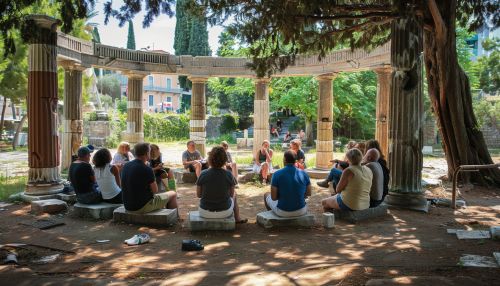Rhetoric
Overview
Rhetoric is the art of persuasion, which along with grammar and logic (or dialectic – see Martianus Capella), is one of the three ancient arts of discourse. From ancient Greece to the present day, rhetoric has been a tool used to influence societies, frame arguments, and communicate effectively. It has played a central role in the Western tradition in shaping public discourse about subjects as diverse as politics, literature, and advertising.
History
Ancient Rhetoric
The study of rhetoric has its roots in Ancient Greece. Aristotle defined rhetoric as "the faculty of observing in any given case the available means of persuasion". He identified three different types of rhetoric: deliberative (political argument), forensic (legal argument), and epideictic (ceremonial speeches). Aristotle's work, The Art of Rhetoric, is a significant early analysis of rhetoric.


Roman Rhetoric
Roman rhetoric, like Greek, was heavily influenced by the political life of the city. The greatest Roman orator, Marcus Tullius Cicero, adapted the Greek rhetorical approach to the needs of his day. His work De Oratore is a significant contribution to the understanding of rhetoric in the Roman world.
Medieval Rhetoric
During the Middle Ages, rhetoric continued to be taught and studied, primarily through the lens of Aristotle's work. The study of rhetoric during this period was more focused on letter writing and sermon composition, reflecting the practical needs of the church and state.
Renaissance Rhetoric
The Renaissance saw a renewed interest in classical rhetoric, with humanists such as Erasmus and Thomas More reviving the study of ancient rhetoric texts. Rhetoric during this period became increasingly stylized and was seen as a means of displaying knowledge and sophistication.
Modern Rhetoric
The study of rhetoric in the modern world has expanded beyond the confines of public address. Rhetoric now extends to virtually all forms of human communication. Contemporary studies of rhetoric address a much more diverse range of domains than was the case in ancient times.
Theories of Rhetoric
Classical Theories
Classical theories of rhetoric were primarily concerned with the strategies that orators used to persuade their audiences. The key elements of classical rhetoric are logos (logical argument), ethos (credibility), and pathos (emotional appeal).
Contemporary Theories
Contemporary theories of rhetoric often focus on the power of discourse to shape people's perceptions and actions. These theories, such as the rhetoric of science, explore how the language and symbols used in a particular field can influence how that field is understood.
Rhetorical Devices
Rhetorical devices are techniques that speakers or writers use to convey their message more effectively. They include figures of speech such as metaphor and simile, repetition for emphasis, and the use of rhetorical questions.
Rhetoric in Different Fields
Rhetoric is used in a variety of fields, including politics, literature, and advertising. In each of these fields, the principles of rhetoric are used to persuade, inform, or entertain.
